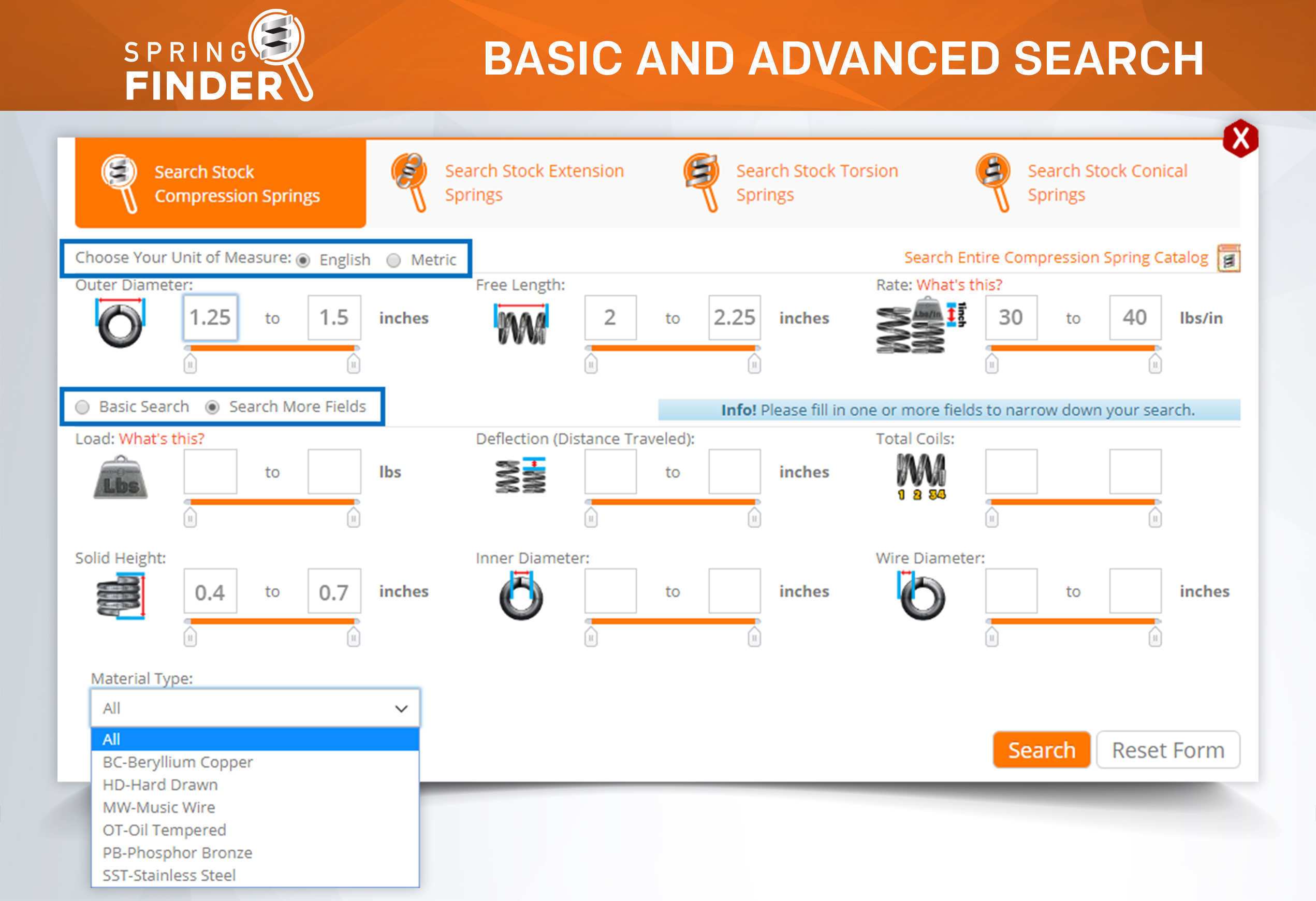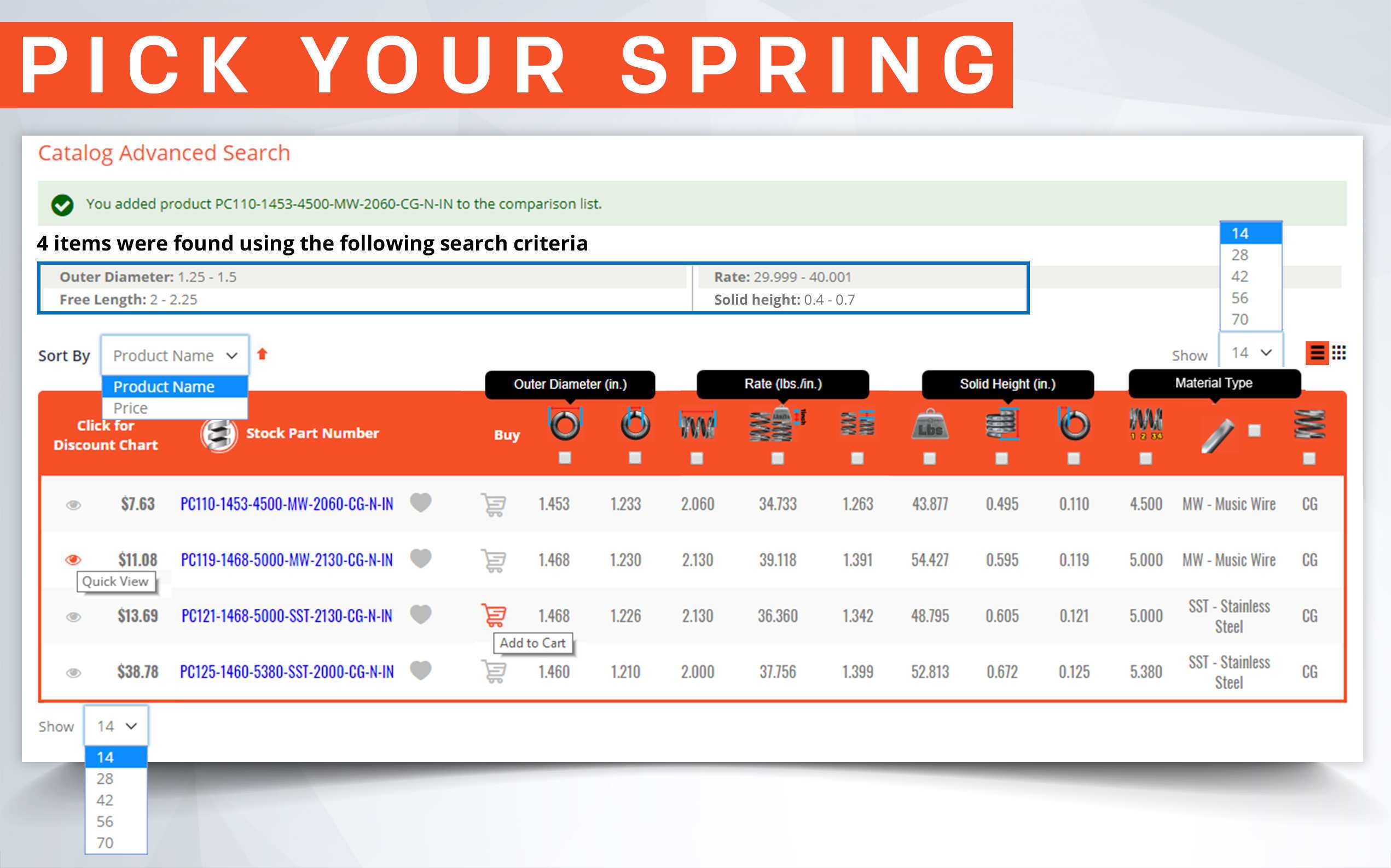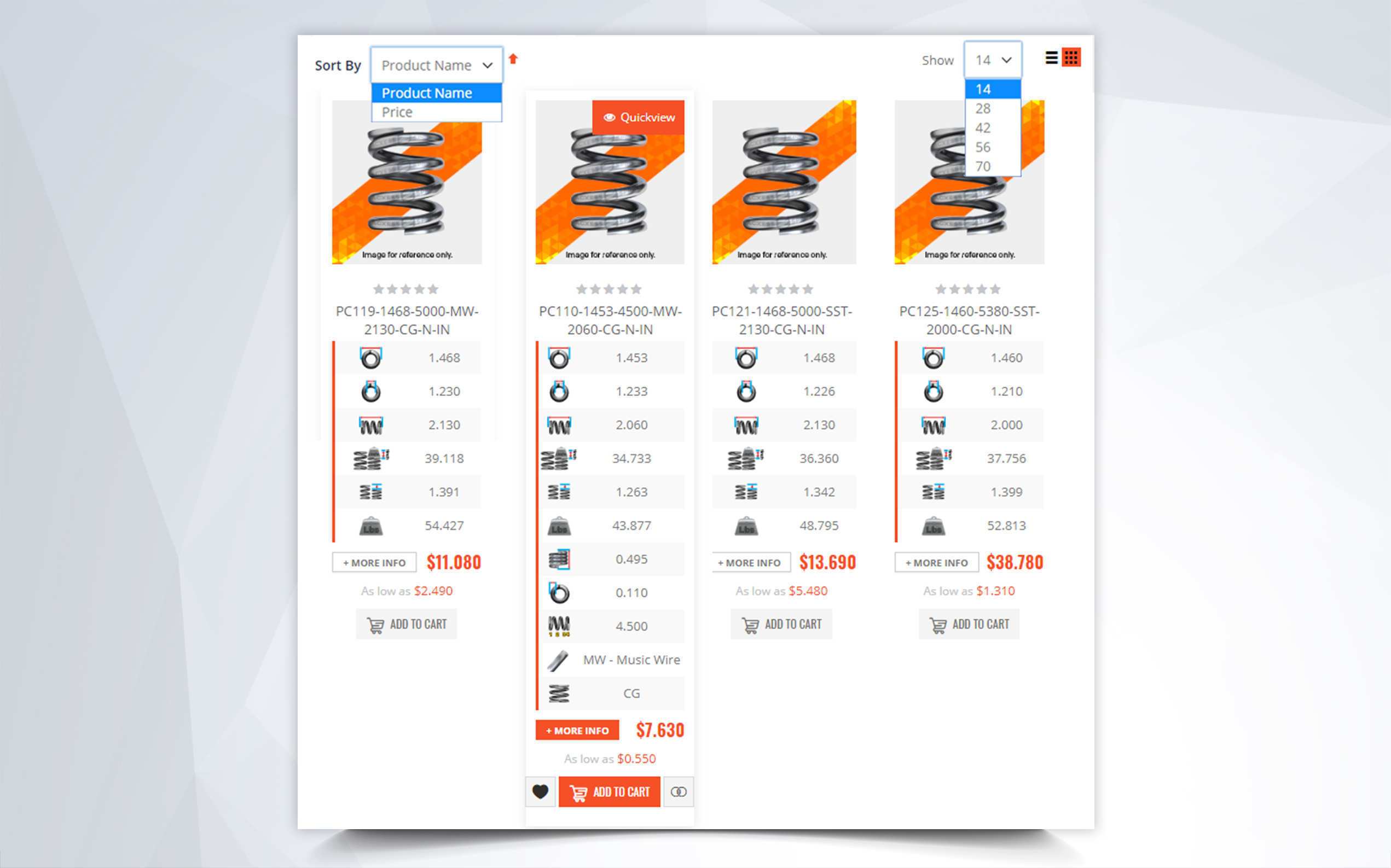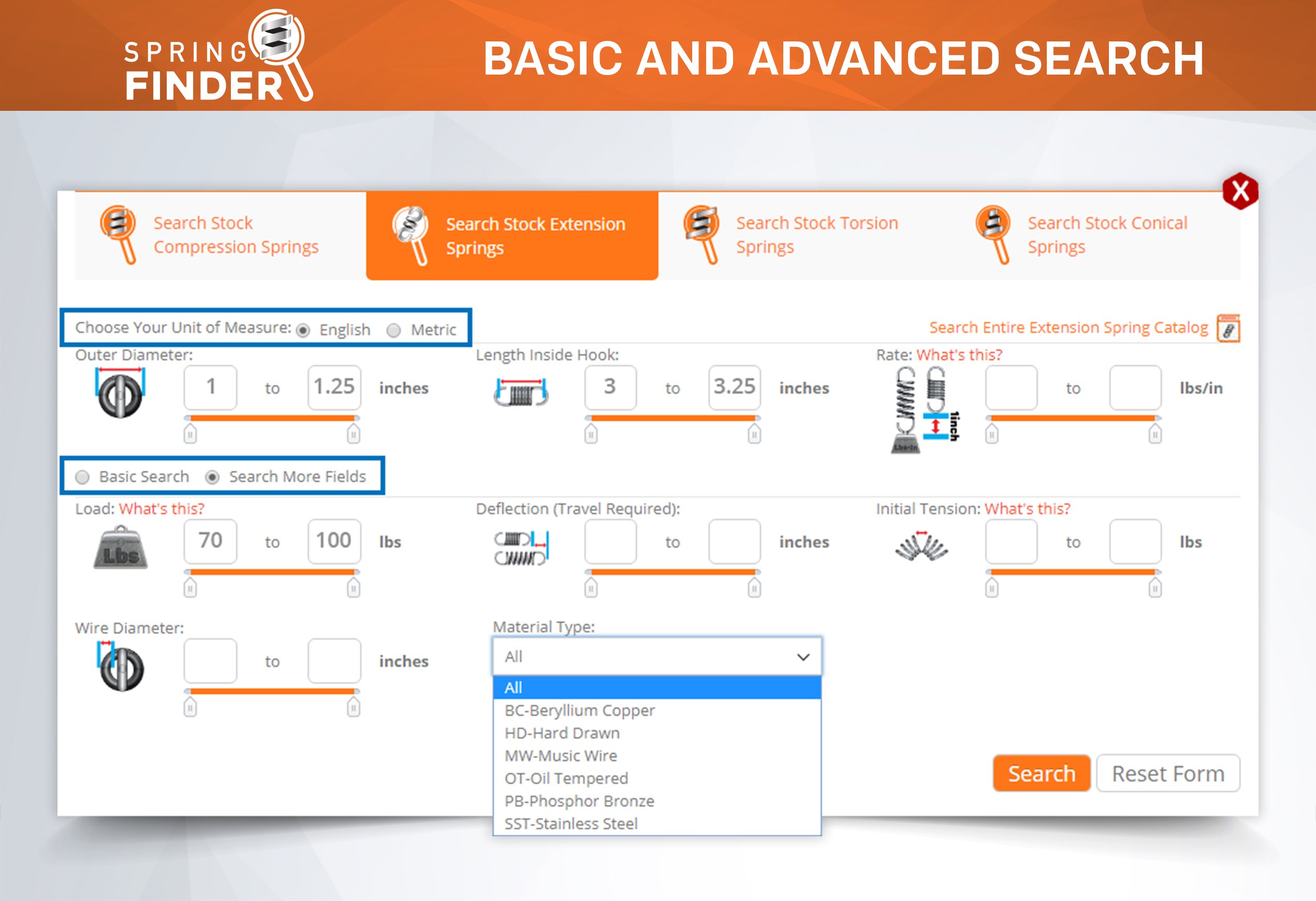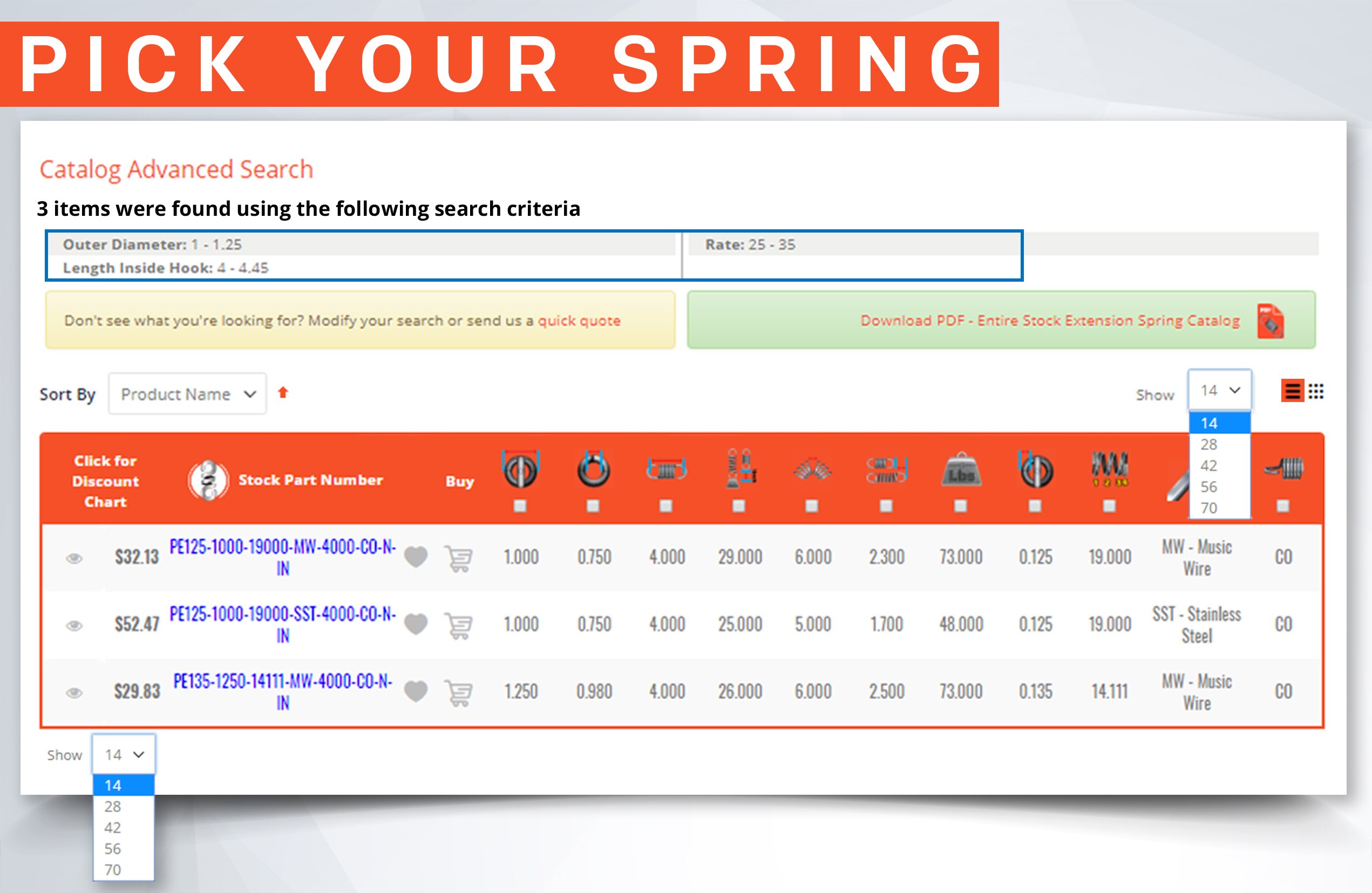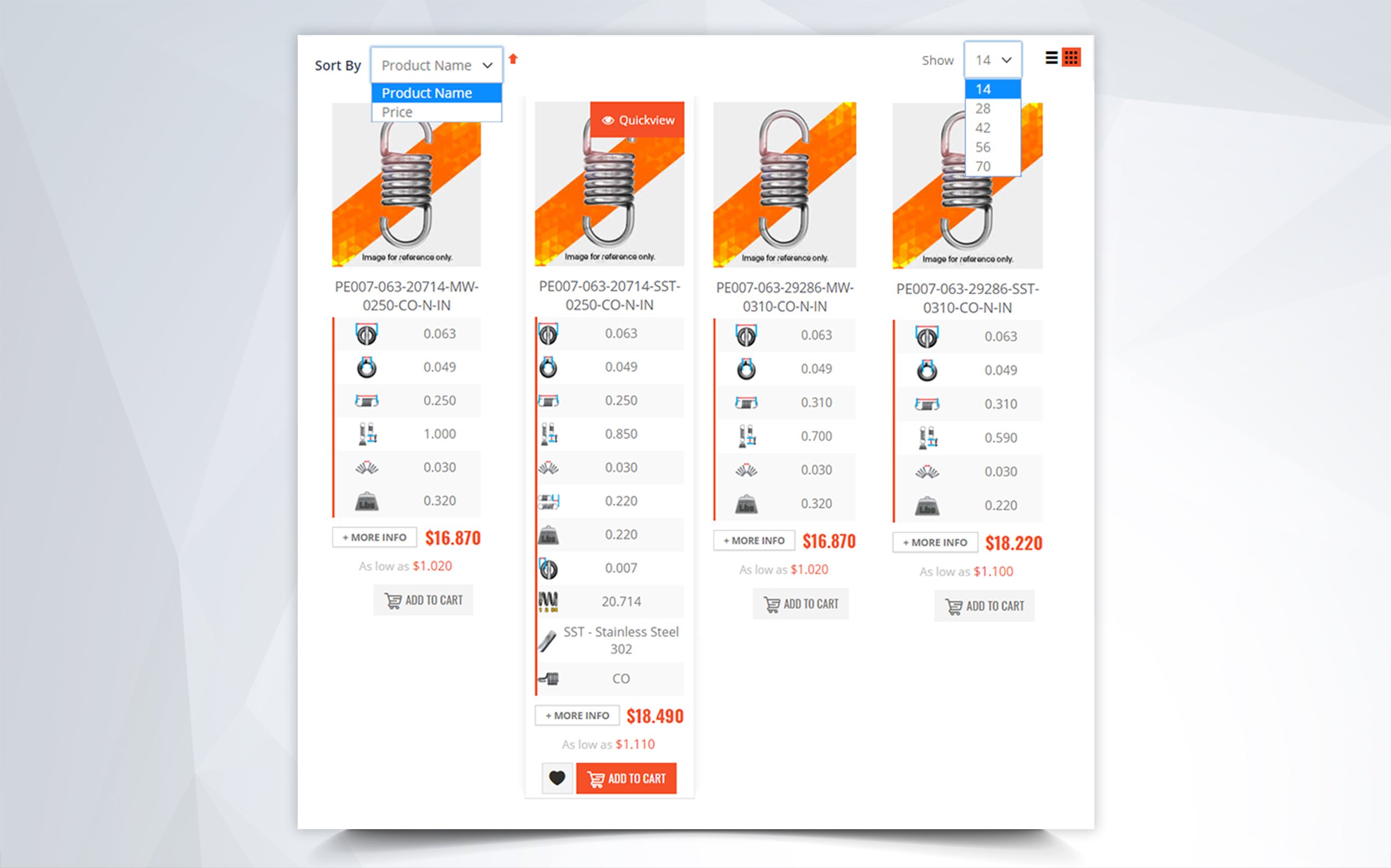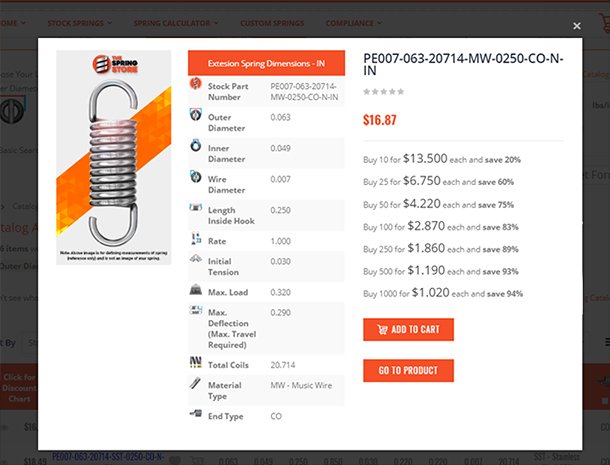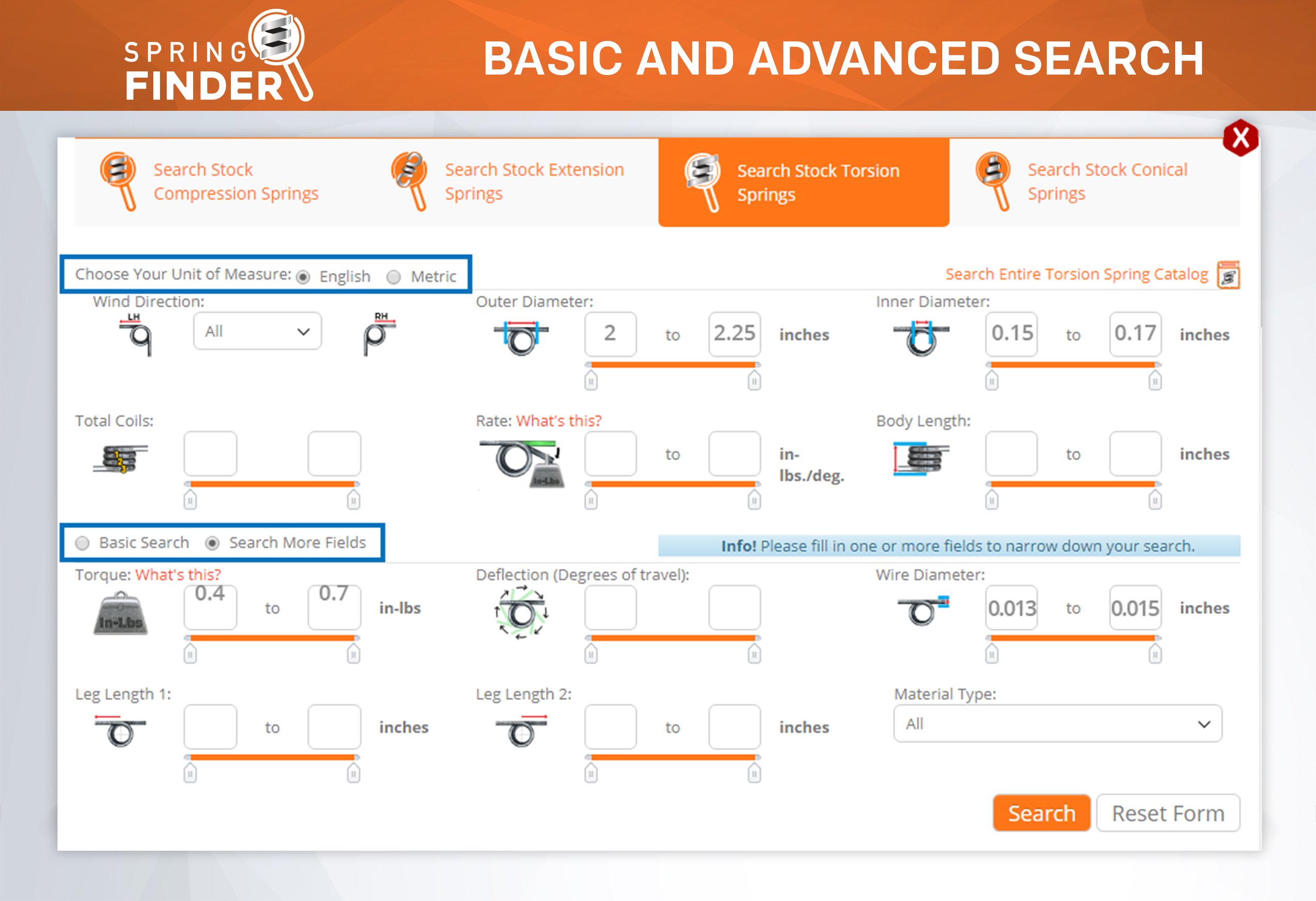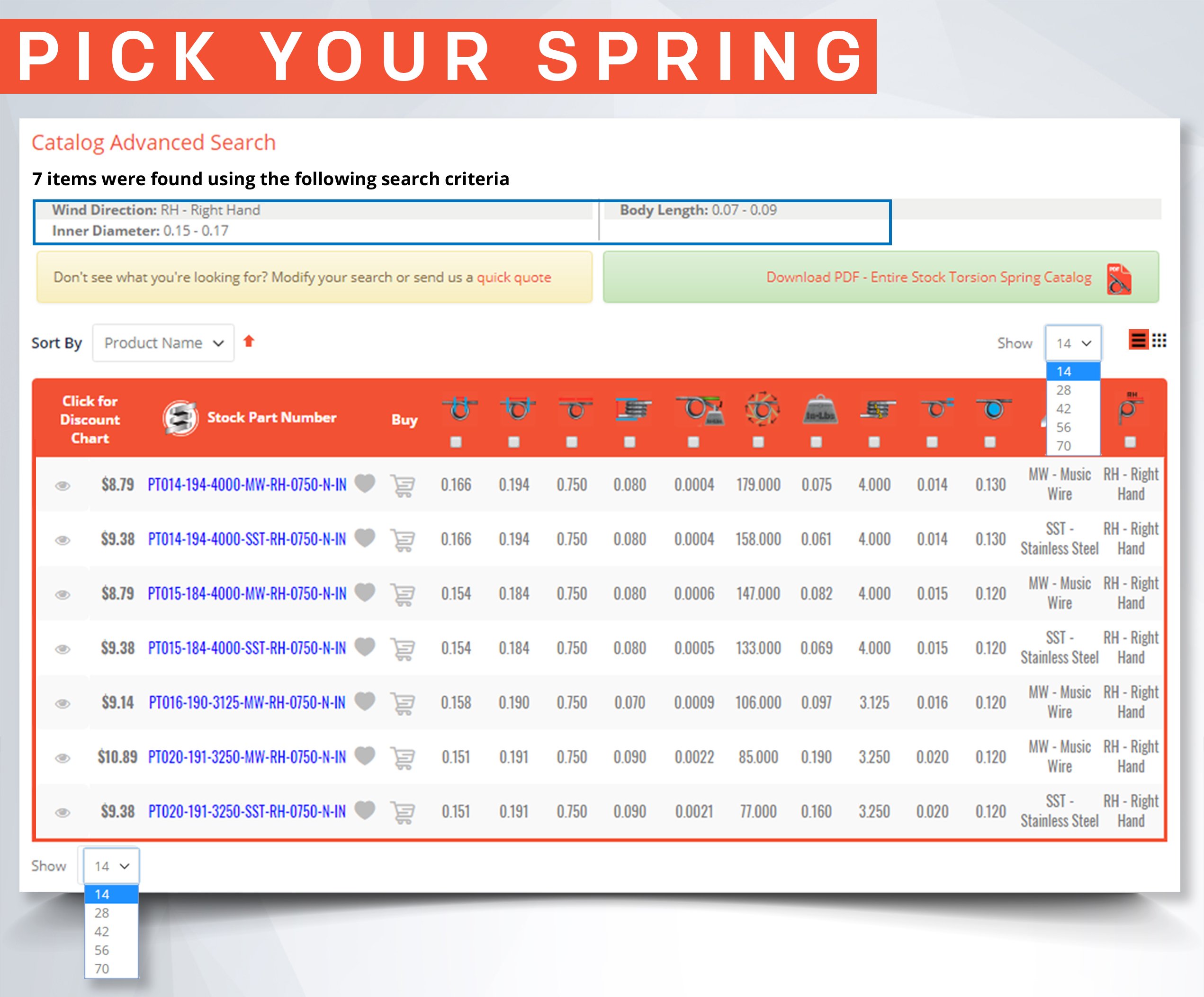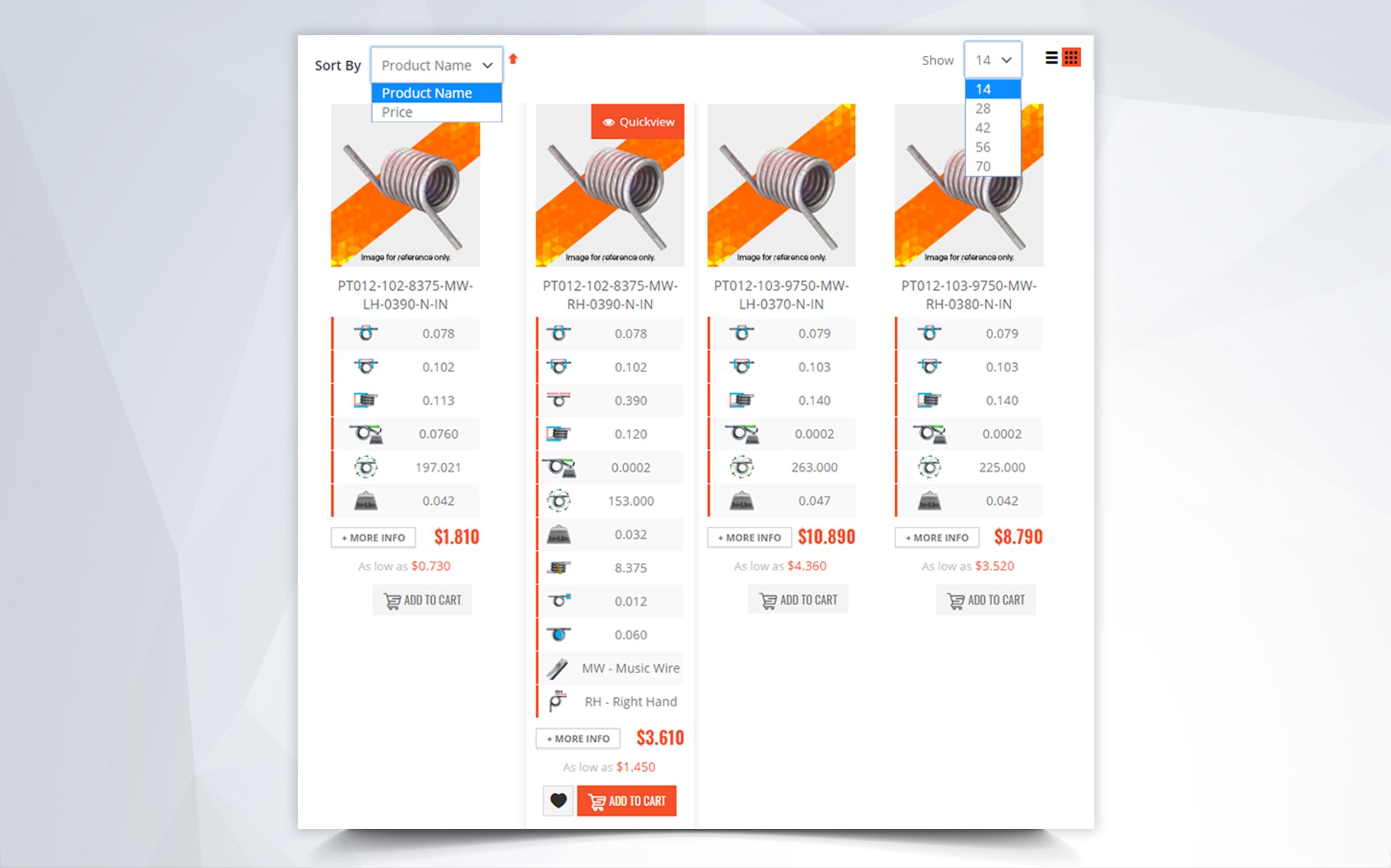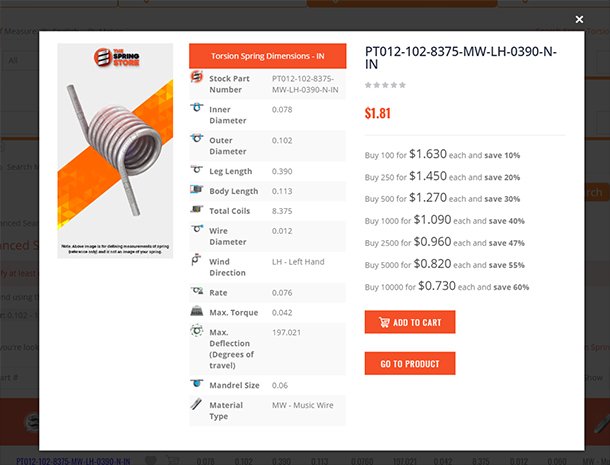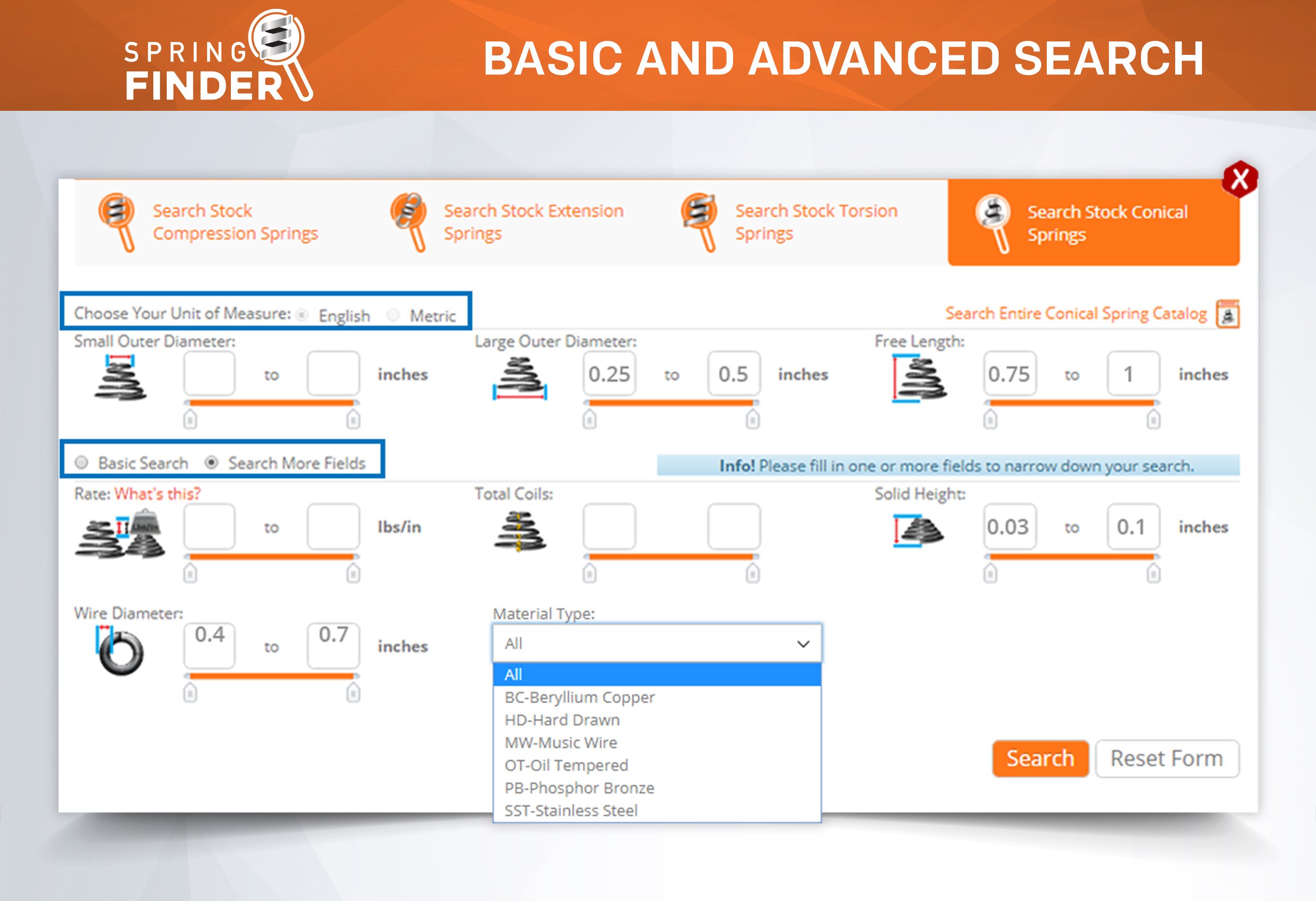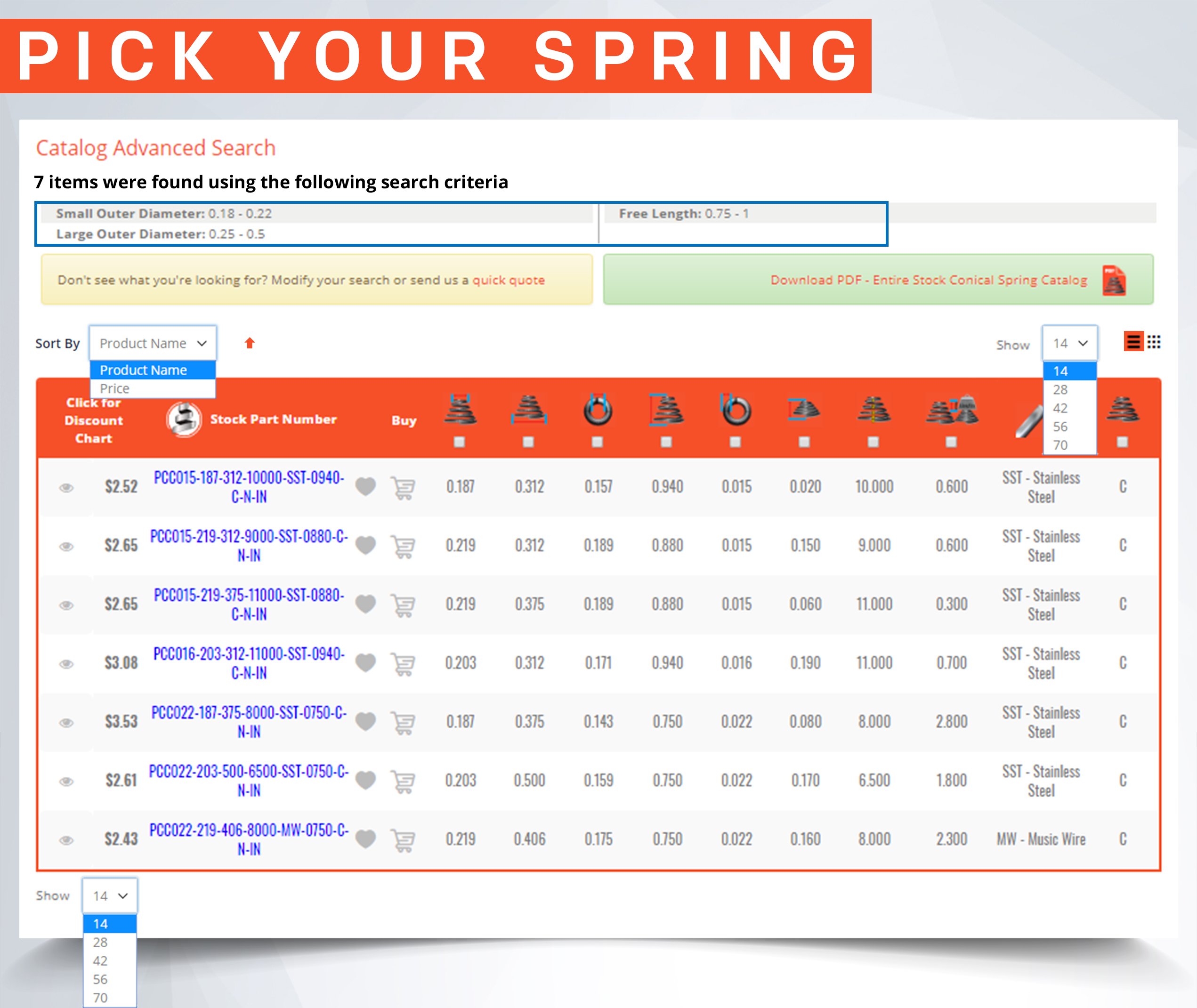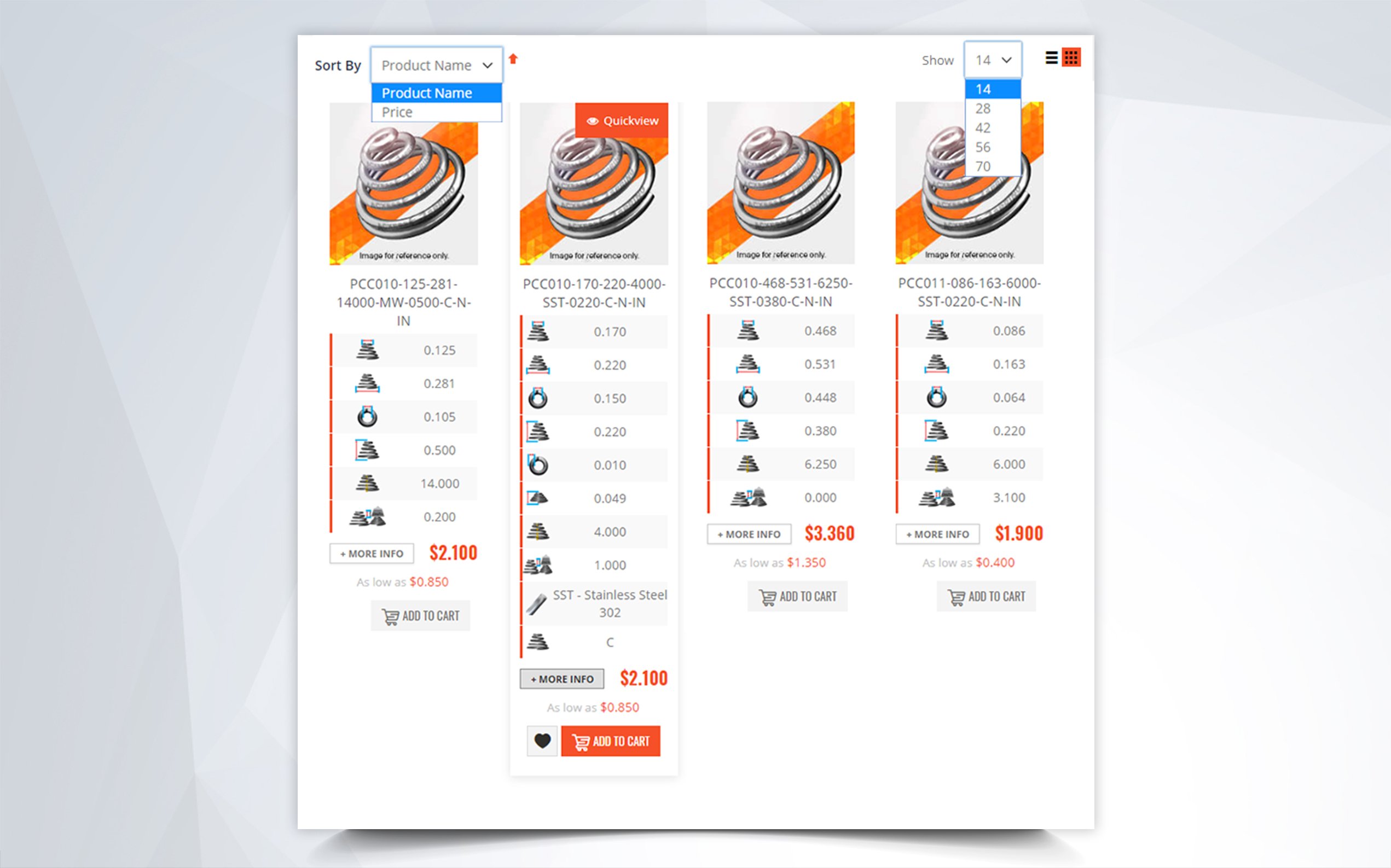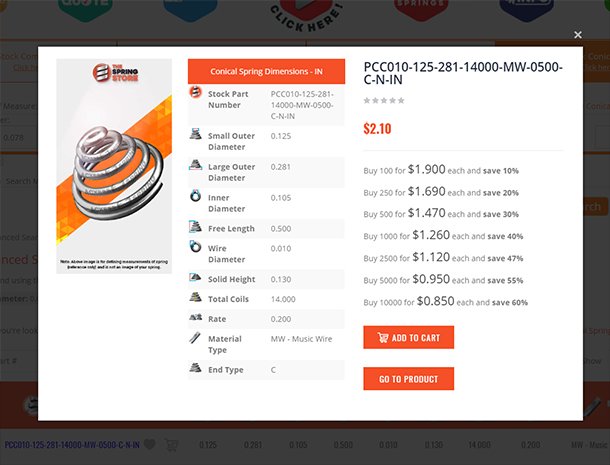Spring Force Examples
Examples and diagrams of compression spring force calculation equations and formulas. These are used to know how much load you can achieve out of a spring and to determine your required spring constant. When it comes to constant force springs, as the force increases, the amount of travel increases proportionally and vice versa. These calculations are based on the spring’s rate which is expressed in “X” units of force per 1 unit of travel (Ex. 5 pounds per 1 inch of travel).
Compression Spring Force
Compression springs are used to push back on the force making it compress. This allows it to return to its original free length when the force is removed.
Take your spring’s required load and distance traveled to figure out how much spring force your spring will need to have in order to meet your working loads. Divide the load by the distance traveled and the result will be the spring rate.
k = F ÷ x
Key:
- k = Rate
- F = Force
- x = Travel
Example
Your spring needs to travel 2 inches under a load of 10 pounds. Use the above formula by plugging in the values (F = 10, x = 2) and you’ll be able to calculate the spring rate you need to have in order to meet those working loads.
k = F ÷ x k = 10 ÷ 2 k = 5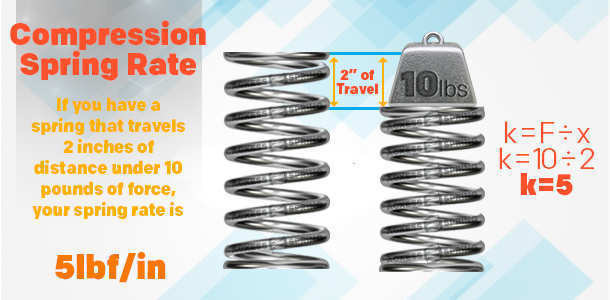
Compression Spring Load
On the other hand, if you already have a spring but want to verify working loads, you multiply the spring rate by the distance traveled. The result of this equation will be the amount of rate your spring will need to have in order to meet those working loads.
F = kx
Key:
- k = Rate
- F = Force
- x = Travel
Example
Your spring needs to travel 2 inches and has a spring rate of 5 pounds. In order to know how much load you’ll need in order to make it possible for the spring to travel those 2 inches, plug in the values into the above formula (k = 5, x = 2).
F = kx F = 5 x 2 F = 10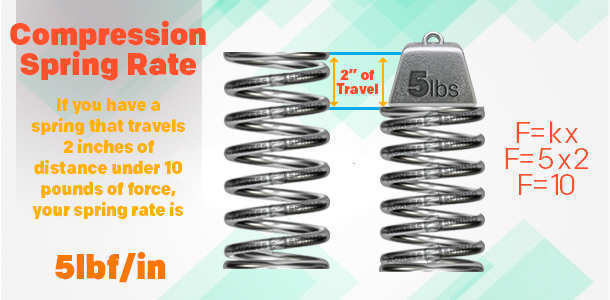
The formulas to calculate the spring’s force is based on the proportion of its physical dimensions with each other as well as the material type. Those formulas are embedded into our spring calculator so you may enter your dimensions there for fast and accurate calculation.





